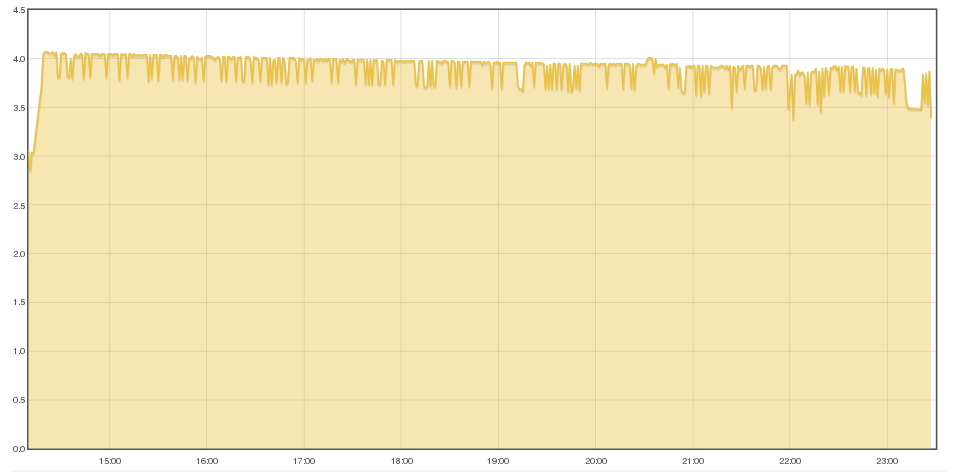One big problem in my designs is the powering circuit : there are so many dedicated chips, battery chemistries, it's very difficult (for me) to design a good one.
For an experiment, I wanted to know how much time a 2200mAh Li-Ion battery could last with a ESP12, as I plan to use some 18650 cells from dead laptop batteries (I have a lot of these).
So, I bought a TP4056 Li-Ion protecting circuit, and powered the ESP12 directly from the module output, without a regulator. 3.3v<->4.2v is out of specs, I know that, but I successfully powered a bunch of ESP directly from 2.9v to 5v without a problem. So the experiment was almost risk-less.
For the test, I wanted the ESP to eat (drink ?) as much power as possible. So I disabled the screen backlight powersave, overclocked the chip to the max, and made the ESP talking with my 3D printer constantly.
Here is the result. End of the graph is the moment the ESP12 started to show instability (rebooting, not connecting anymore to the AP, etc...)

So, as a conclusion :
A ESP12 module + SSD1306 OLED could run happily on a Li-Ion battery + protecting circuit during ~9h... This is 245mAh on average.
One could notice the ESP started showing instability around 3.4v, when the datasheet says 3.3v, and I tested it successfully at 2.9v. I think the Li-Ion battery current becomes less stable when depleting. Next experiment will add a very Low Drop Out regulator, actually in the mail...
 Arcadia Labs
Arcadia Labs
Discussions
Become a Hackaday.io Member
Create an account to leave a comment. Already have an account? Log In.